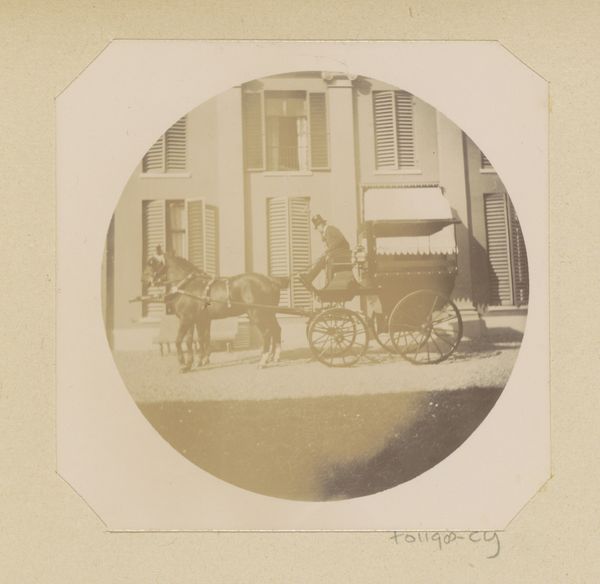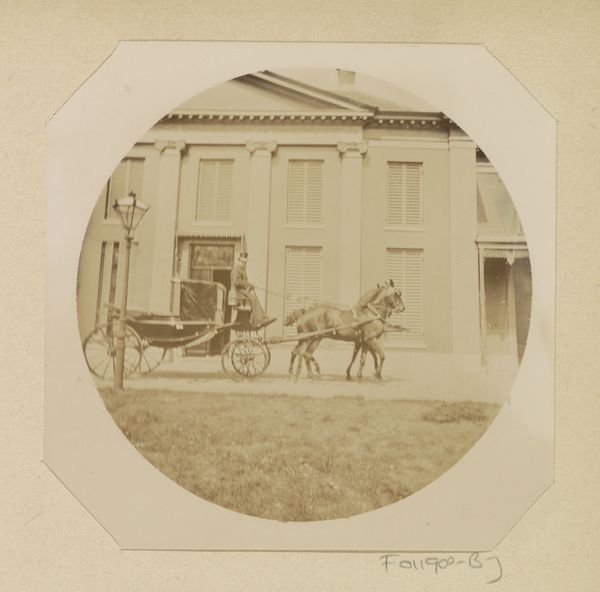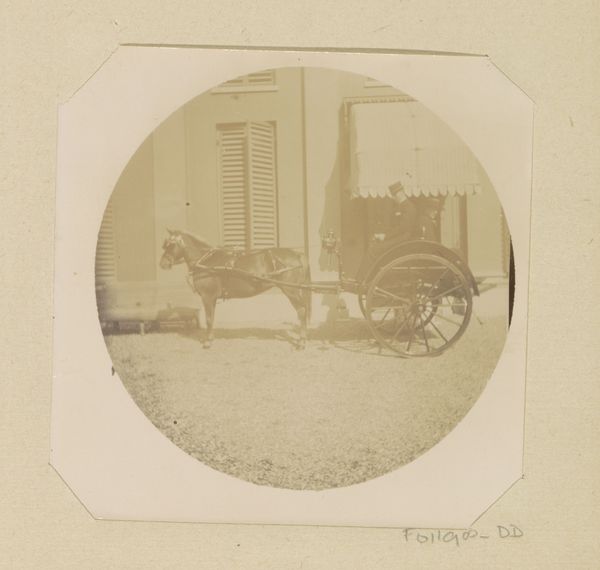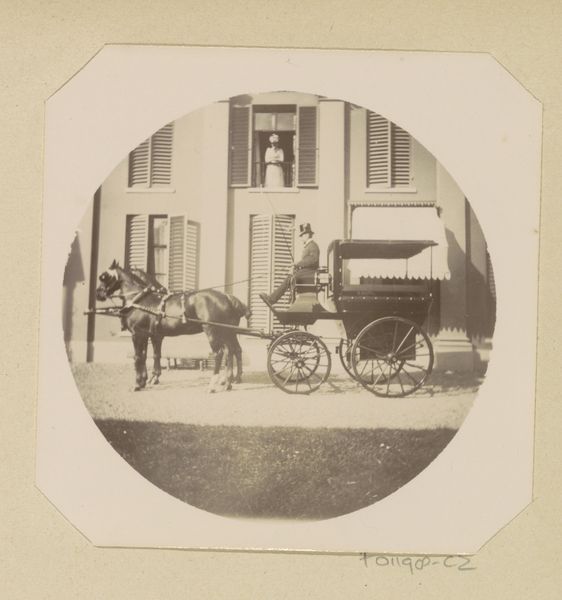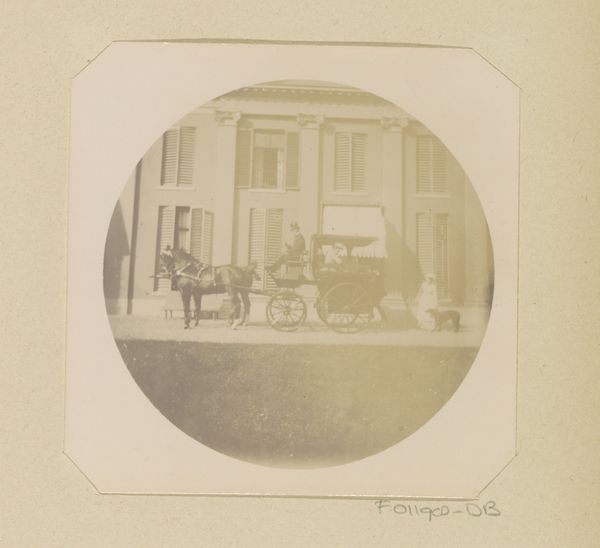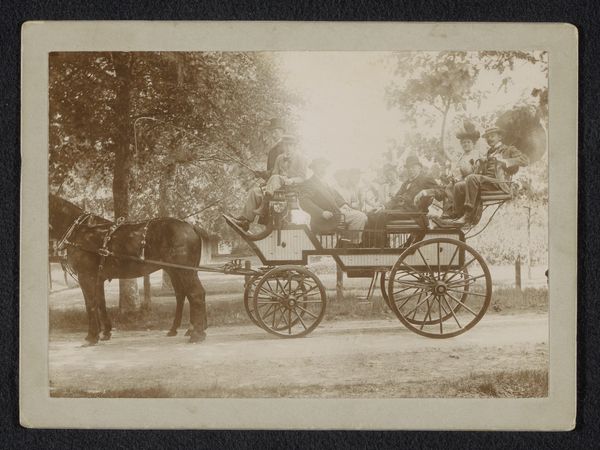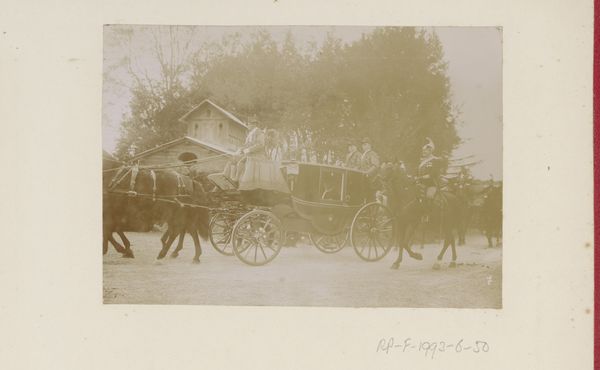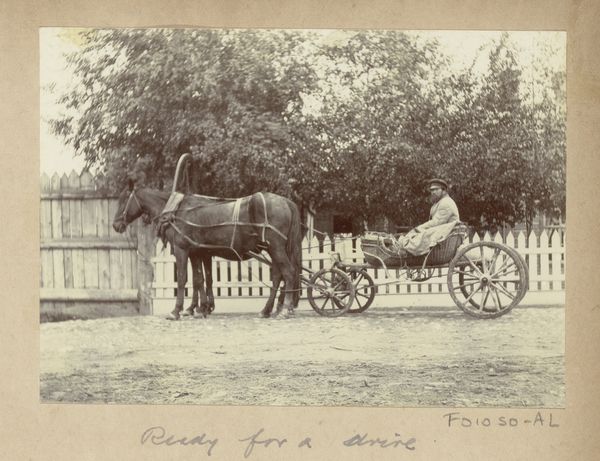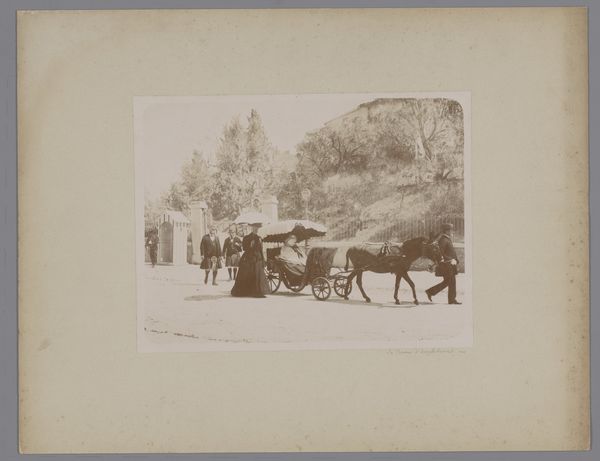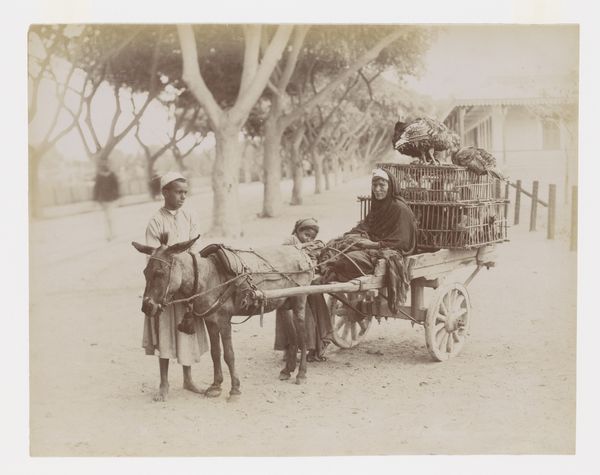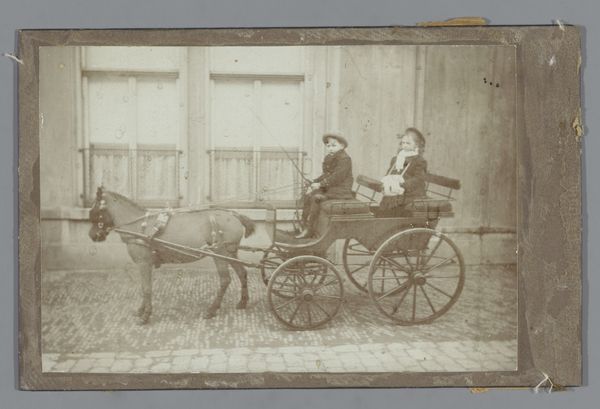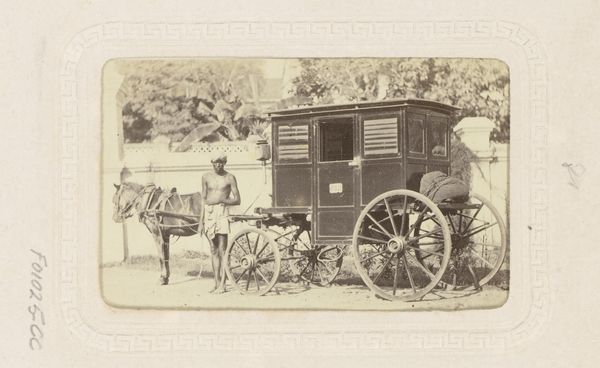
Rijtuig wachtend voor een huis, mogelijk Groot Warnsborn nabij Arnhem 1889 - 1893
0:00
0:00
Dimensions: height 99 mm, width 98 mm
Copyright: Rijks Museum: Open Domain
Curator: Let’s turn our attention to this serene gelatin-silver print, "Rijtuig wachtend voor een huis, mogelijk Groot Warnsborn nabij Arnhem," captured sometime between 1889 and 1893 by Johanna Margaretha Piek. Editor: It has a subdued elegance, doesn’t it? The muted tones and somewhat unconventional round frame give it a dreamlike, almost melancholy feel. There's a sense of waiting, of anticipation, heavy with implied narratives about gendered limitations. Curator: Exactly. Photography, then, existed as both a tool and mirror, used here as a document and an ideological vehicle. This image of a horse-drawn carriage outside perhaps, what we can read as a woman's house raises questions. The carriage stands as a symbol of wealth, of course, but within its frame, its mobility is poised to contrast the female gender roles as fixed, private figures confined within domestic interiors. Editor: You’re spot on, and look at who occupies the driver’s seat. Clearly a man. While we cannot assert that the home depicted here belongs to the female passenger we might then look closely at whose property, literally who had control of, such means of movement or transportation. Consider the position of the estate owner, often also a male figure in control, in close relation to the seated male carriage driver. Curator: Further complicating matters, this photograph circulated in a rapidly industrializing Netherlands where burgeoning photography became increasingly associated with modern life. By carefully arranging elements of her compositions like the relationship between architectural space and carriage, Piek reveals her acute engagement with social issues around urbanization and modernization impacting the private lives of women. It speaks to the restricted access that was granted for woman when participating and being a part of those fast shifts. Editor: Right, we begin to consider questions around who had access to public life during the turn of the century, with many doors still kept closed off, behind shut windows in grand estates. We could even posit the open doors of the house indicate the imminent departure of a woman trapped within. Curator: Well, looking at the way Piek so intentionally invites questions of women's representation makes me eager to think through new theories. We should continue investigating into who can be identified at that time of Piek within similar, innovative intersectional dialogues that continue today. Editor: It is hard to not want to go deeper here. This small scene encapsulates volumes on gender and social hierarchy, inviting a multitude of layered, relevant discussions.
Comments
No comments
Be the first to comment and join the conversation on the ultimate creative platform.
